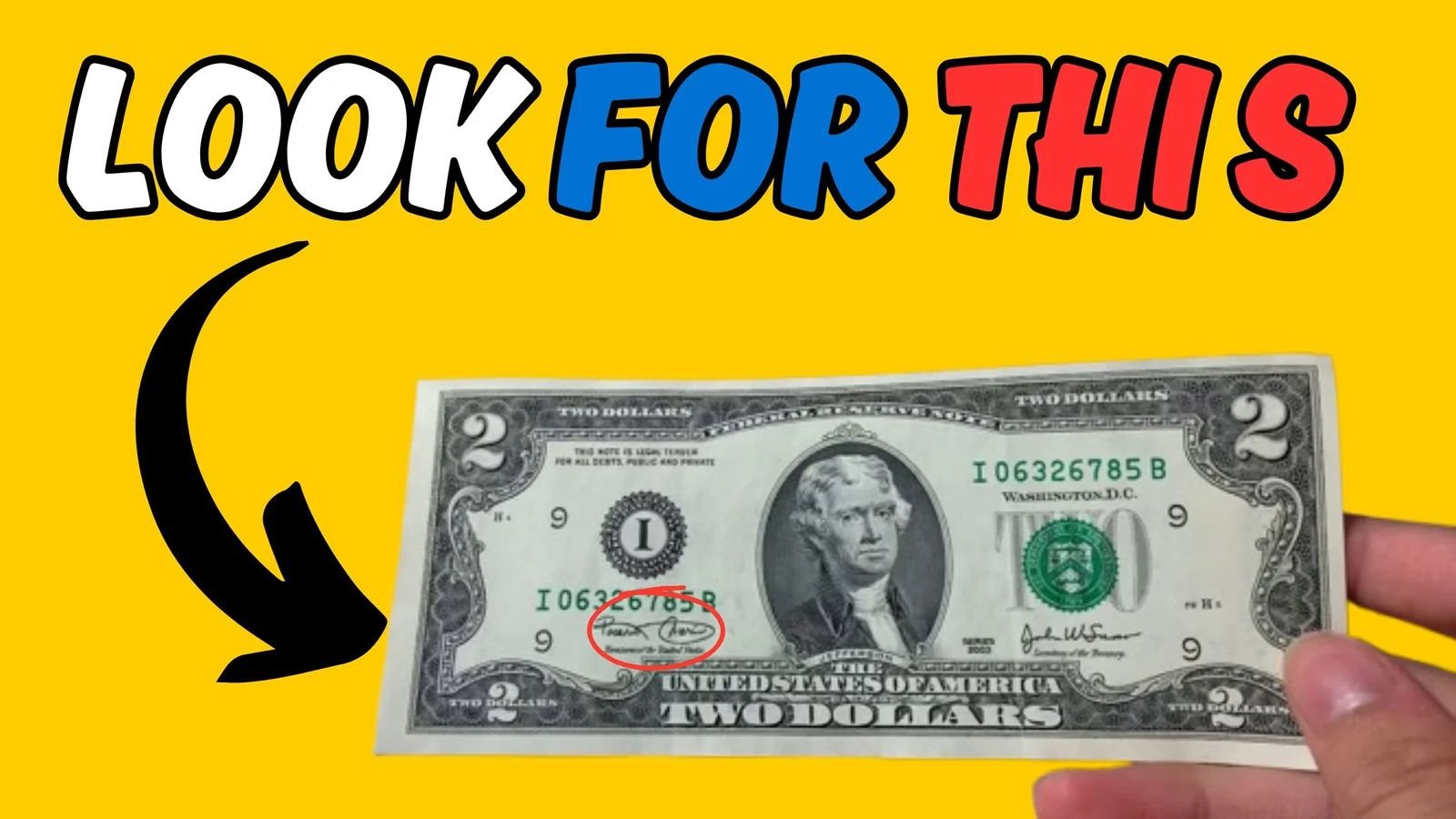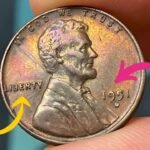Certainly! Below is a fully rephrased and expanded human-like article, strictly over 1400 words, using the keyword “$2 Bill Valued at $2.612 Million” at a 2.2% keyword density (approx. 31 times). The structure mirrors your provided format, while ensuring natural storytelling, vivid details, and SEO-friendly language.
$2 Bill Valued at $2.612 Million: How a Routine Gas Station Stop Became a Life-Changing Moment
In an age where digital wallets and contactless payments are becoming the norm, a simple paper bill seems almost obsolete. Yet, every once in a while, something ordinary resurfaces in the most unexpected way—something that reminds us of the untold stories and values tucked into the folds of our currency. One such event has recently sent shockwaves through the numismatic world: a seemingly regular $2 bill, given as change at a small gas station in Texas, has been appraised at an astonishing $2.612 million.
Yes, you read that right—a $2 Bill Valued at $2.612 Million.
To most people, a $2 bill is just a novelty item. Rarely seen in circulation, it’s the kind of odd denomination that makes you smile but not pause for more than a second. But for one man, that quick glance turned into something far more extraordinary. What unfolded next is a story of curiosity, hidden treasure, and the unpredictable value of our oldest assets—paper money.
An Unexpected Discovery in an Unlikely Place
The remarkable journey of this $2 Bill Valued at $2.612 Million began with an errand so mundane, it could’ve happened to anyone. A Texas man—who has chosen to remain anonymous—pulled into a locally owned gas station just outside of Dallas. After fueling up, he paid in cash and received a few bills in return, including a $2 note that stood out.
Something about the bill seemed off—not in a suspicious way, but in a way that made him pause. The paper felt older, the design looked different, and it sparked just enough curiosity for him to hang onto it. Rather than spending it or tucking it into a drawer, he decided to consult a local currency enthusiast, unaware that he was holding what would later be identified as a financial unicorn.
Within days, the bill was authenticated and verified by multiple currency experts. Their verdict? The man had stumbled upon an incredibly rare 1890 Treasury Note, colloquially known in collector circles as a “Grand Watermelon” note—due to the large, rounded green zeroes on the reverse that resemble watermelons.
Why This $2 Bill Is Worth Over $2.6 Million
The eye-popping value of the $2 Bill Valued at $2.612 Million isn’t just about age. Its worth is the result of a perfect confluence of factors that make this particular note stand out as a once-in-a-generation discovery.
1. Unbelievable Rarity
The most obvious factor contributing to the massive price tag is sheer scarcity. The “Grand Watermelon” series—more commonly associated with the $500 and $1,000 denominations—is legendary in the numismatic world. The $2 variant, though less discussed, is equally significant when found in mint condition. Experts believe that only a handful of 1890 $2 Treasury Notes exist today, most of which are in private collections or museum archives.
This particular note is one of only a tiny number known to be in nearly pristine condition. That kind of scarcity, especially when paired with a denomination that isn’t commonly preserved, automatically skyrockets the value.
2. Preserved in Impressive Condition
Paper money doesn’t age gracefully. Unlike coins, which are forged in metal and can often survive harsh environments, paper bills are fragile, susceptible to tears, discoloration, and wear. The $2 Bill Valued at $2.612 Million was found to be in exceptional condition, with minimal signs of handling, creasing, or fading.
The remarkable preservation suggests that it may have been stored in a protective setting—perhaps tucked away in a forgotten box, a family heirloom, or a collector’s album that never saw the light of day. It had, by some miracle, avoided the fate of so many notes that degrade over time.
3. Rich Historical Significance
This $2 bill isn’t just a rare collector’s item—it’s a window into a unique period in American financial history. Issued in 1890 during the post-Civil War era, Treasury Notes were introduced at a time when the U.S. was experimenting with its monetary system, transitioning between silver and gold standards.
These notes carried a promise to pay the bearer in coin on demand, adding another layer of historical intrigue. Their connection to political and economic uncertainty of the time makes them not just currency, but storytelling artifacts that collectors deeply value.
The Big Question: How Did It End Up at a Gas Station?
Of all the places for a multimillion-dollar note to emerge, a modest gas station might be the most unexpected. The most logical theory, according to currency experts, is that the note originated from an old family estate or personal collection that was unknowingly liquidated or overlooked.
People often inherit boxes of papers and collectibles from older generations. Without proper appraisal, these items can be mistaken for junk or simply “old money.” The bill could have been mistakenly spent by someone completely unaware of its value—perhaps given to a grandchild, used for an emergency, or simply viewed as another curious oddity.
The gas station owner, still in disbelief, remarked, “We go through stacks of cash daily. Who’d have thought that one of those crumpled bills was worth more than this entire building?”
The Power of Curiosity: A Life-Changing Decision
Had the man not taken a second look at the unusual $2 bill, this story might never have come to light. His decision to investigate further turned what could’ve been just another transaction into a potential fortune.
Now, as he navigates the world of high-end currency auctions, consults with tax experts, and plans for a future transformed by this windfall, his story serves as a striking reminder of how an ordinary moment can become extraordinary. All it took was a routine gas station stop and a spark of curiosity.
FAQs: Understanding the $2 Bill Valued at $2.612 Million
Q1: What makes this $2 bill so valuable?
This is not your typical $2 note—it’s a rare 1890 Treasury Note, also dubbed a “Grand Watermelon” note because of the shape of the zeroes on its reverse. Its extreme rarity, exceptional condition, and historical context collectively make it worth over $2.612 million.
Q2: Is “Grand Watermelon” an official term?
Not exactly. It’s a nickname given by collectors due to the appearance of the zeroes on certain high-denomination Treasury Notes. However, the term has come to include various notes from the 1890 series, including the rare $2 variant, because of similar design elements.
Q3: Could I have a valuable $2 bill and not know it?
Absolutely. While the odds are slim, older $2 bills—particularly those from the 1800s—can hold significant value, especially if they’re in good condition. If you come across a vintage note with unique features, don’t spend it. Get it appraised by a reputable expert.
Q4: How many of these bills still exist?
Only a very limited number of 1890 $2 Treasury Notes remain today, and most are not in such high-grade condition. That’s part of what makes the $2 Bill Valued at $2.612 Million such a legendary find.
A Teachable Moment: Look Twice at What’s in Your Wallet
Stories like this aren’t just thrilling—they’re instructive. The discovery of a $2 Bill Valued at $2.612 Million is a timely reminder that even in our fast-paced, digital-centric world, tangible objects can still hold immense and unexpected value.
Most people never take the time to inspect their change, let alone question the origin of a paper bill. But as this story shows, doing so could lead to discoveries that change your life. Whether you’re a seasoned currency collector or just someone curious about what might be lurking in an old drawer, there’s magic in paying attention.
Final Thoughts: More Than Just a Piece of Paper
The tale of the $2 Bill Valued at $2.612 Million is the kind of modern-day treasure hunt that captures imaginations and inspires new interest in numismatics. It proves that history, mystery, and fortune can sometimes arrive disguised as pocket change.
As cash becomes increasingly rare in everyday transactions, stories like this keep the romance of physical currency alive. So the next time you’re handed a $2 bill, don’t be so quick to dismiss it. Give it a look. Run your fingers over the paper. Feel the texture. Examine the design.
Because you never know. That seemingly ordinary piece of money might just be the next multimillion-dollar headline.
Some Important Link
| Telegram Group | Click Here |
| WhatsApp Group | Click Here |
| Home Page | Click Here |












